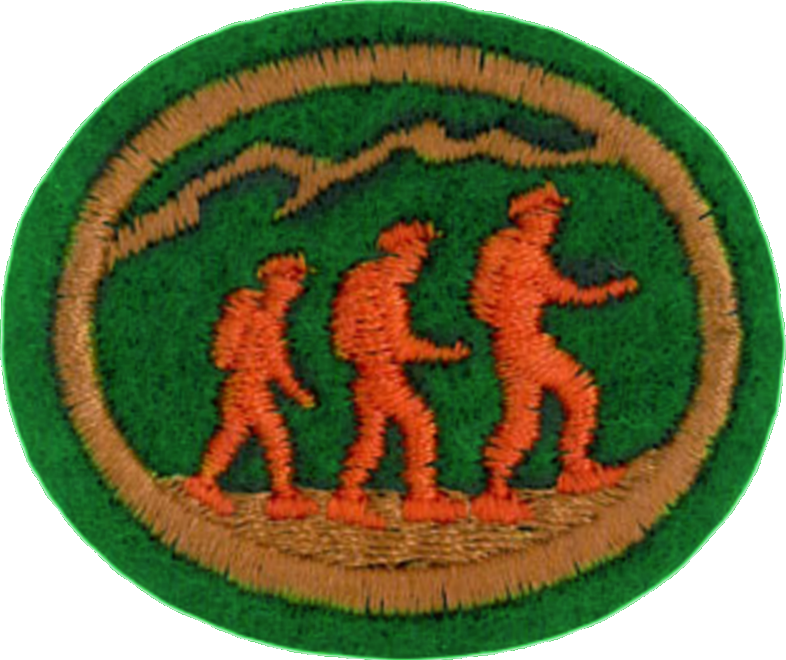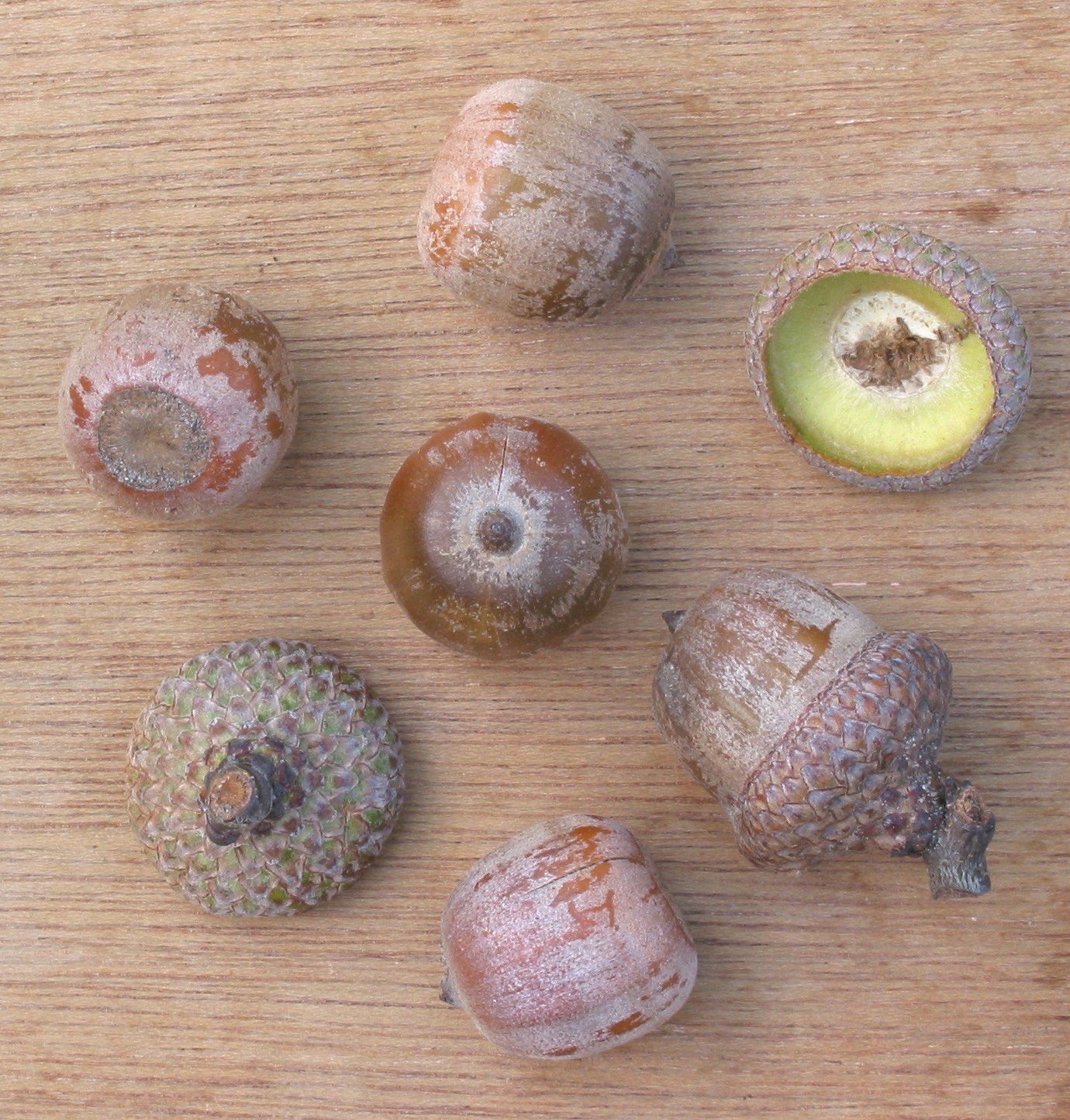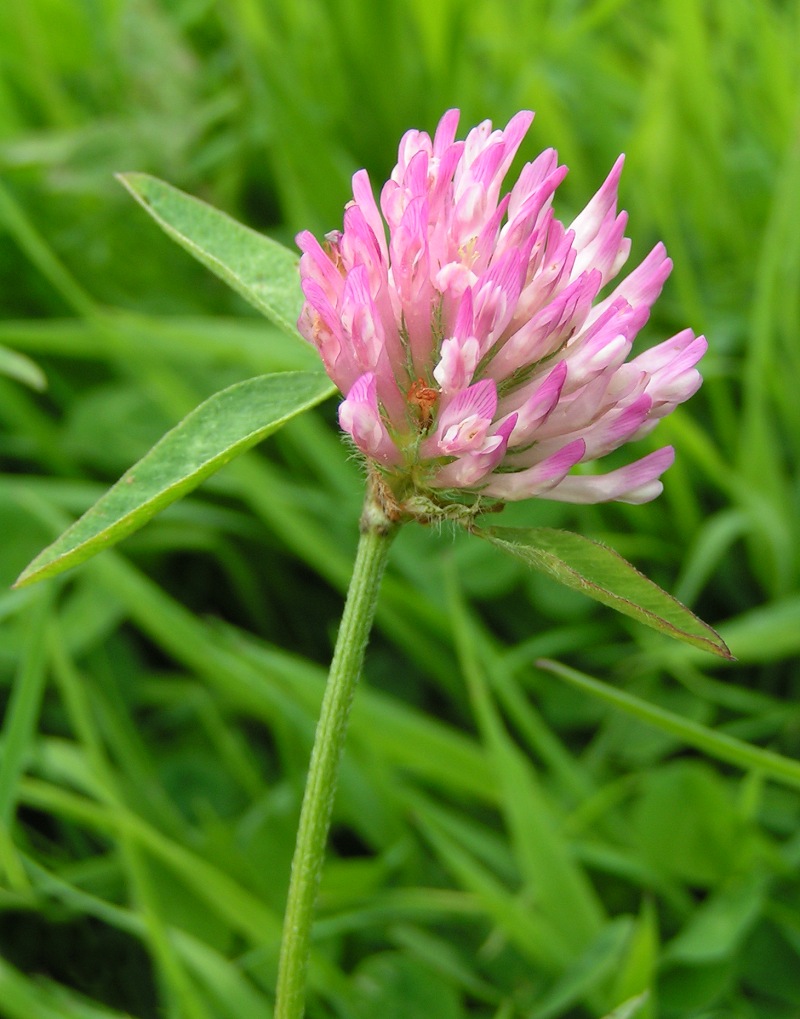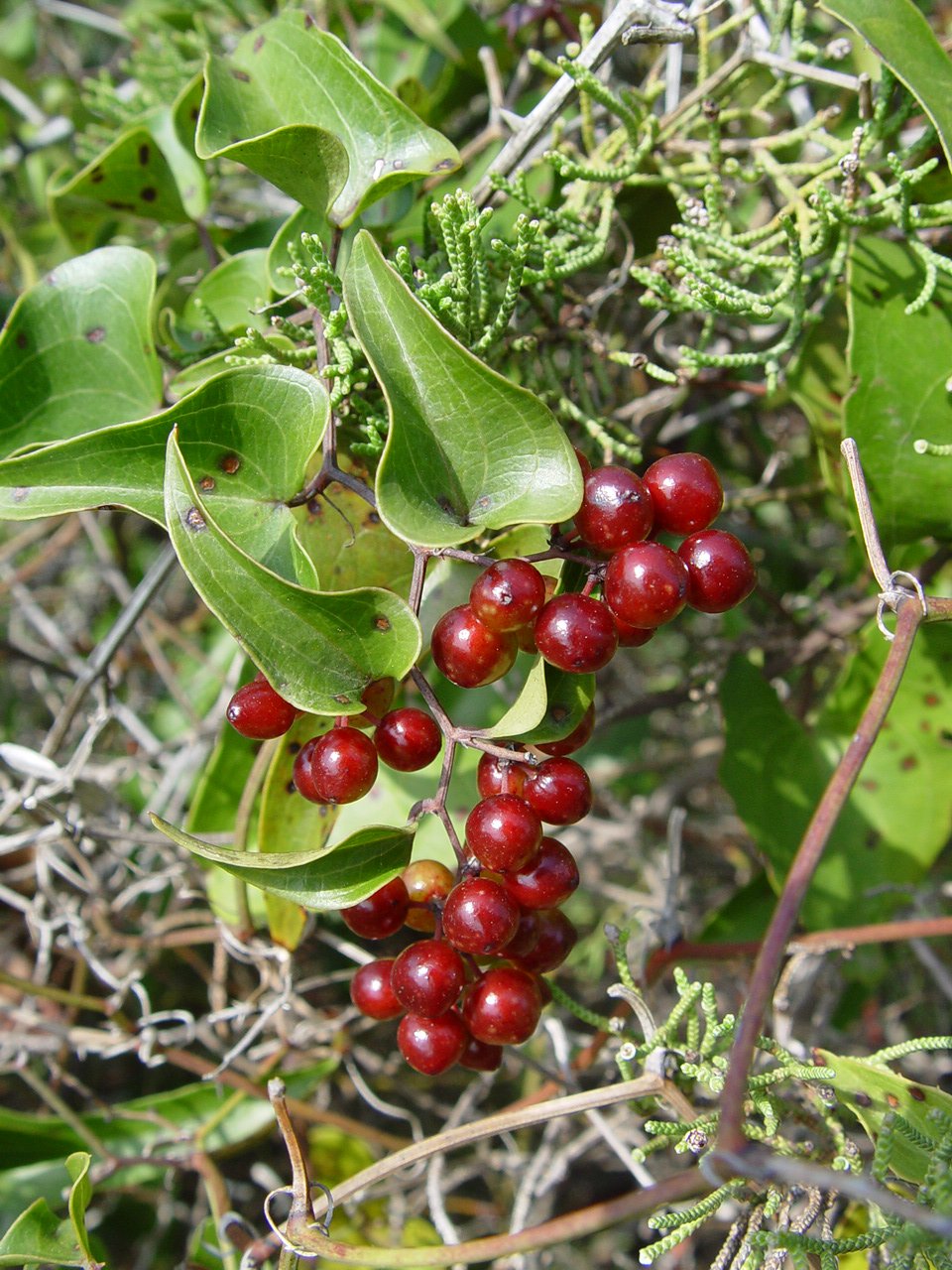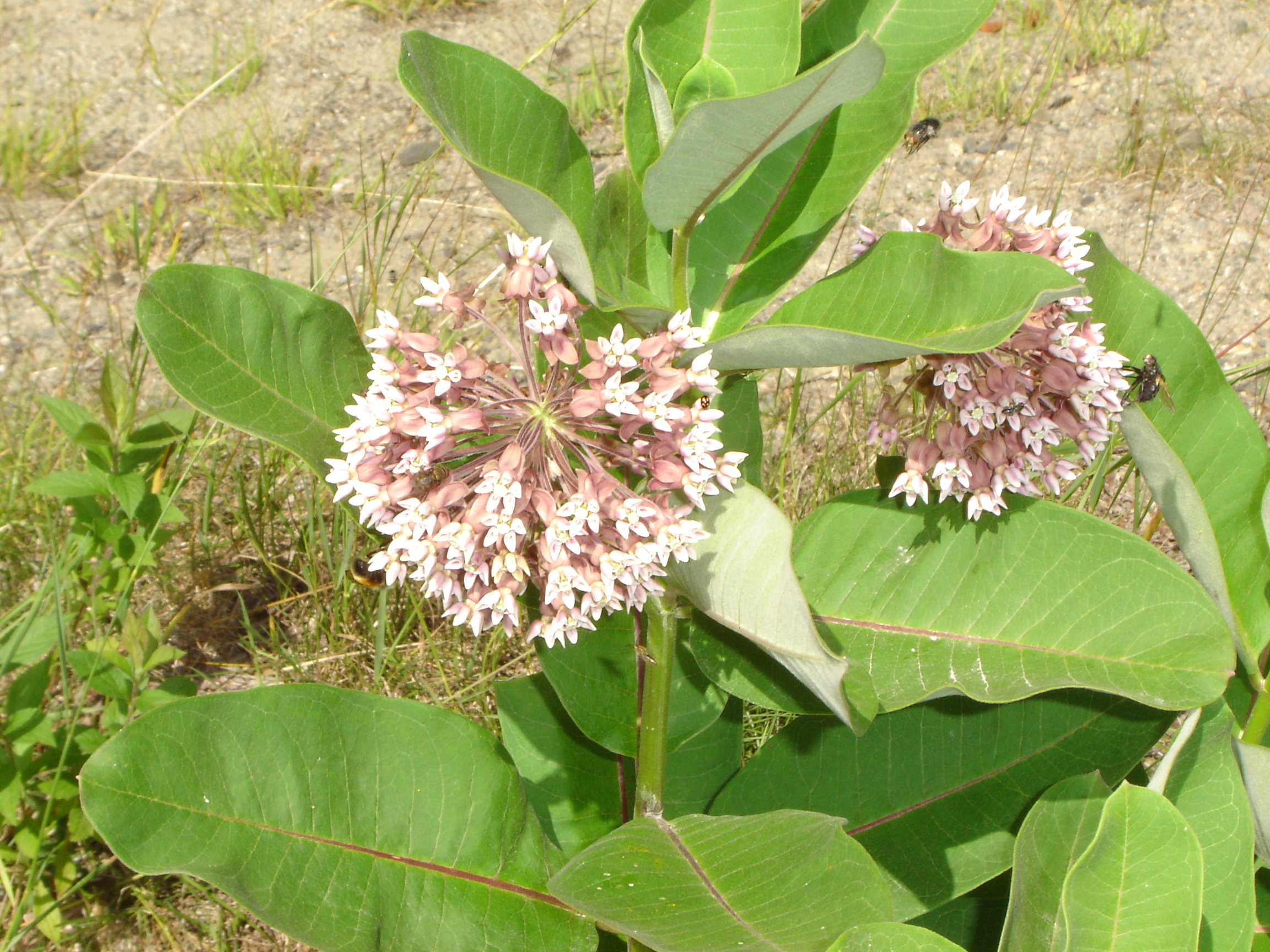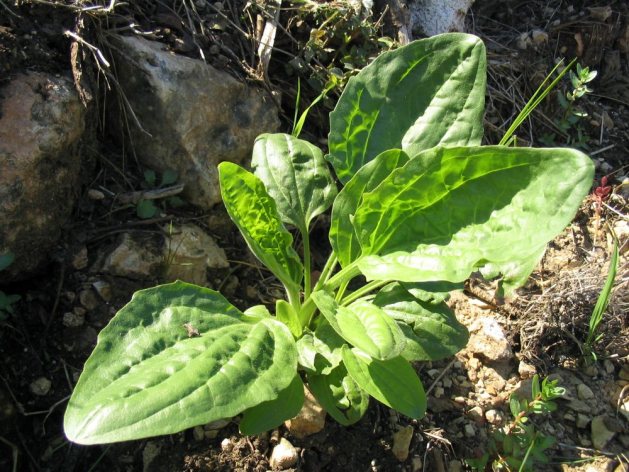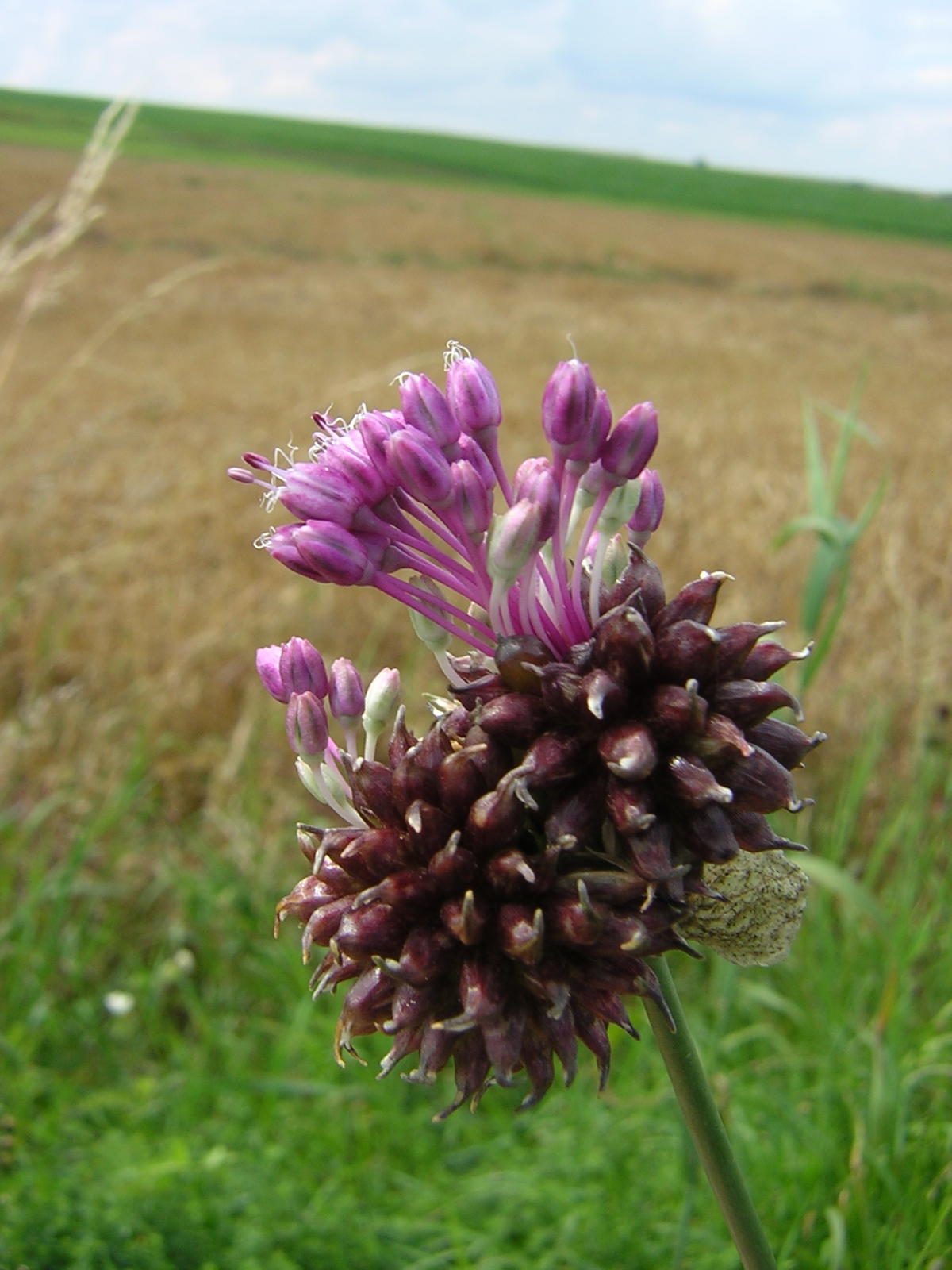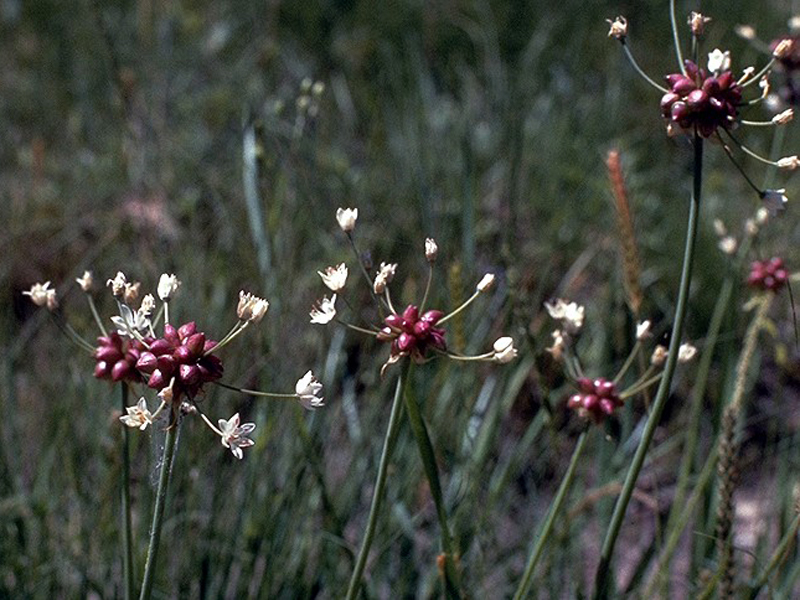AY Honors/Wilderness Leadership/Answer Key
1
1b
1e
2
The principles of health apply whether you are in the wilderness or not. A healthy diet should be maintained on any wilderness outing. Regular medications (if necessary) should be taken as prescribed. Personal hygiene should be practiced, including washing the hands frequently, and brushing the teeth regularly.
The danger of being in the wilderness is that it is remote. Ambulance service is not available in a forest, and transporting an injured person to a facility where professional medical care is available is likely be a time-consuming proposition. Furthermore, the more time that elapses between an injury and treatment, the less positive the outcome is likely to be.
Therefore, extra care should be taken, and the risks should be evaluated with the remoteness of the location in mind. Be conservative, and minimize risk wherever possible. This means you do not jump from high places. A sprained ankle can lead to disaster. Remember that if a person is injured badly enough to become immobile, someone will have to carry him out, along with his gear and their own gear, especially if that gear is critical to survival. If everyone is already fully laden, this can be a tremendous problem.
This is also the reason that "horsing around" should not be tolerated by a leader. Horseplay can lead to injury, and injury is to be avoided.
Fire safety should also be practiced, as should ax safety, and knife safety. Remember that an injury in the wilderness is always more serious than an equivalent injury at home.
3
4
Lost
The best advice about being lost, is - DON'T! And the best way to keep from getting lost is to stay on the path.
If you suddenly realize that you do not know where you are, then here are some things to do:
- Don't panic. You can't think clearly when you panic, so take a deep breath and relax.
- Pray. You may not know where you are, but God does, so talk to Him.
- Look around - maybe you'll recognize something that can guide you back to civilization (such as a blaze marking on a tree or rock, which indicates where the trail is).
- Listen for the sounds of other campers, traffic, waterfalls, rivers or anything that might help you find your way back. If you cannot see anything that you recognize and shows you how to easily get back or get help, STAY PUT.
- If you have a map and compass, try to locate your position by looking for hills, valleys or streams.
- You can try to relocate the trail, but you do not want to get any further away from your last known location. Mark your location with something - a backpack, hat, or a large rock - but make sure it's something unmistakable. Then venture 10 paces out, and circle your marker, all the while looking about to see if you recognize the trail or a landmark, and always keeping your marker in view. If you do not see anything you recognize, widen the circle by another 10 paces and repeat. Continue circling your marker at ever wider intervals, but stop when continuing would cause you to lose sight of the marker.
- If you cannot identify your location, STAY WHERE YOU ARE. If you are near a trail, stay there. It is a lot easier for someone to find you if you stay put.
- If you have a whistle, blow on it. If you don't have a whistle, yell loudly. Someone in your party might hear you. Repeat this every 15 minutes or so and be sure to listen after each sounding. Three of anything is universally recognized as a call for help, so three whistle blasts, or three shouts.
- Do not climb a tree or steep hillside. It may seem like a good idea, but it is not worth the risk of falling and getting hurt. The chances of you seeing anything helpful are low.
- If it's an hour or less until sunset, prepare to spend a comfortable evening. Make a shelter and light a fire. Things will look better in the morning, and your fire may attract a rescuer. Remember, stay where you are.
To learn more on this topic, review the Hug-A-Tree education program created by the National Association for Search and Rescue.
Stranded
If you find yourself stranded in the wilderness, the first priority should be to find (or make) shelter. The cause of death for most stranding situations is exposure to the elements. Shelter is more important than water or food. A person can die of exposure overnight, whereas death by dehydration takes a day or more, and death by starvation may take several weeks. If possible, find or build a shelter well before nightfall.
If you have a cell phone with you, try calling the emergency service (911 in most places) and let them know of your predicament. Give them as accurate a description of your location as possible. If you cannot get voice service, try sending a text message instead - these are more reliable when the signal is weak.
After shelter has been secured, the next priority should be to build a fire. A fire serves many functions, the primary one being the provision of heat. This is especially important in winter conditions. A fire will also provide a visual indication of your whereabouts to any search party that has been dispatched to find you. Fire will also keep wild animals away and will provide a morale boost.
When day breaks, assess your situation. If the weather permits, venture out and see if you can figure out where you are or if there is anything you can do to improve your situation. Do not venture far from your shelter, or if you do, leave an indication of where you are headed. If you feel you need to leave your shelter, head for higher ground where cell phone reception may be better (again, use a text message instead of voice). It is far easier for a search party to find a person who stays put than it is to find one who is roaming about.
Try to make your location visible to aircraft. Keep the fire going even in the daytime. Make an S.O.S. in the snow or sand, or use rocks to spell out the letters. Drape brightly covered cloth over shrubbery. Do whatever you can to make your presence easily detectable. Then wait for rescue.
Injured
In a bleeding injury, your first priority is to stop the flow of blood. Do this by applying pressure to the wound and by binding it with bandages. Review your first aid procedures before setting out. If you are injured and stranded, stay where you are. This is the quickest path to rescue. Do not attempt to traverse treacherous territory if your are physically unable to do so. This could lead to further, more serious injury.
Search and Rescue Drill
Adventist Youth Honors Answer Book/First Aid/Searches
Of course, for a mock search, you may opt out of using "all available resources," such as dogs and aircraft. For this requirement it will suffice to conduct a sweep of the area and if that fails, conduct a grid search.
5
Imagine yourself going into the wilderness with a group of people. Of all the people in the group, one seems to know nearly everything about staying comfortable and surviving in that environment. Whom do you think the group will follow?
Of course there is more to wilderness leadership than knowing how to thrive in the environment. A good leader will also know how to persuade people to follow. This is accomplished through competence and respect. But these qualities of a good leader are common to all of the areas listed below. Therefore, in the sections below we will focus on the skills necessary for comfort and survival but that are unique to the area being discussed.
5a
5b
5c
5d
5e
Fire
Small fires are better than large ones as they require less fuel and make less smoke. Sit close. Less fuel means less work in gathering fuel. Review the answers in Camping Skills IV to refresh yourself on how to build a fire in wet weather.
Water
When travelling for extended periods of time in the wilderness, it is not practical to carry all the water you will need. Happily, it is not necessary to do that either if you know how to make the water that is available suitable for drinking. There are generally three ways to purify water: chemically, by boiling, or by filtering. The most reliable method of purifying water is by pumping it through a filter. Chemically treating the water is also easy and convenient until you run out of purification tablets. Boiling water requires that you stop long enough to build a fire and bring the water to a boil. Then you are faced with the problem of carrying boiling water. For these reasons, filtering is the preferred solution. Be sure to refill when water is available, and think ahead to when water may not be plentiful (such as near the summit of a large hill or mountain), and make adequate preparations.
Bear Danger
Bear danger is the risk encountered by humans while interacting with wild bears.
Although some bears are alpha predators in their own habitat, they do not, under normal circumstances, hunt and feed on animals of their own size (including humans). Therefore, the most important cases of bear attack occur when the animal is defending itself against any possible threat. For instance, bear sows can become extremely aggressive if they feel their cubs are threatened. Any solitary bear is also likely to become agitated if surprised or cornered by a threat maker, especially while eating.
- Dealing with bear encounters
Before backpackers are allowed to enter an area with bears, they may be required to watch a video that teaches how to avoid encountering or agitating bears. Experts emphasize keeping your distance and making noise to avoid startling a bear as the best ways to avoid a bear attack. If a bear does become confrontational, the usual advice is to raise the arms above the head so as to appear larger, and to yell at the bear. Running away can activate the bear's hunting instincts and lead to it perceiving the human as prey. If a bear does charge, persons are advised to hold their ground, as most bear charges are bluffs. Finally, if a bear does attack, the usual advice is to curl into a fetal position so as to shield vital organs and appear non-threatening. If this is not effective in stopping the attack, the only option left is to fight the bear in any way you can. The ideal place to punch a bear is the snout or eyes. This advice applies to omnivores such as brown and black bears; the best way to avoid being attacked by the completely carnivorous polar bear is not to enter any area where polar bears live, or at least remain inside a hard-shell vehicle or building.
- Food storage and garbage disposal
Bears have an excellent sense of smell, and are attracted to human and pet foods as well as refuse. Improper storage of these items can allow bears to eat human food and become dependent on it, increasing the probability of encounters with humans. Most brown and black bear encounters in human-populated areas involve so-called "trouble bears", usually young males who have just left their mothers and do not yet have a territory of their own. If they wander close to human settlements, the smells of cooking and garbage can cause them to ignore their usual instinct to avoid humans. Many parks and persons in areas with bears utilize bear-resistant garbage cans and dumpsters for this reason, and many areas have laws prohibiting the feeding of bears, even if unintentional. Campers can access bear-proof containers from many parks to store their food and trash. The containers are then buried or strung on a rope between two tall trees, out of bears' reach. They are also instructed to put their containers, campfire, and tenting 90 meters ![]() away from each other, forming a triangle.
away from each other, forming a triangle.
5f
Snow Blindness
The reflection of the sun's ultraviolet rays off a snow-covered area causes this condition. The symptoms of snow blindness are a sensation of grit in the eyes, pain in and over the eyes that increases with eyeball movement, red and teary eyes, and a headache that intensifies with continued exposure to light. Prolonged exposure to these rays can result in permanent eye damage. To treat snow blindness, bandage your eyes until the symptoms disappear.
You can prevent snow blindness by wearing sunglasses. If you don't have sunglasses, improvise. Cut slits in a piece of cardboard, thin wood, tree bark, or other available material. Putting soot under your eyes will help reduce shine and glare.
Fire
Dried moss, grass, and scrub willow are other materials you can use for fuel. These are usually plentiful near streams in tundras (open, treeless plains). By bundling or twisting grasses or other scrub vegetation to form a large, solid mass, you will have a slower burning, more productive fuel.
Warm Clothing
Dress in layers and avoid cotton. Wool or synthetics are warm even when wet, but when cotton gets wet (even from sweat), it effectively conducts heat away from the body. Wear a waterproof outer layer. If you find you are beginning to sweat, remove a layer of clothing or vent it. It is common for a person carrying a heavy load or doing heavy work (such as with an ax or shovel) to sweat even on a very cold day. Keep adjusting your layers until you quit sweating, as you do not want to be wet. When the exertion comes to an end, sweat-soaked clothing will quickly chill you.
Travel
Travelling in the snow is in many ways easier than travelling over solid ground if you have the right equipment. Snow shoes will keep you from sinking into the snow making it far easier to walk. Skis will speed you along even faster. Load your equipment on a sled and pull it along behind you. In this way you can carry far more equipment (or small children) than you could with a backpack.
6
Review and practice the Leave No Trace 7 Principles:
- Plan ahead and prepare.
- Travel and camp on durable surfaces.
- Dispose of waste properly.
- Leave what you find.
- Minimize campfire impacts (be careful with fire).
- Respect wildlife.
- Be considerate of other visitors.
© 1999 by the Leave No Trace Center for Outdoor Ethics
Be considerate of other campers. When purchasing tents, buy ones in muted colors that will blend in with the environment. If most of your camping is done at camp grounds frequented by others, blues, greens, and browns are preferred to reds and oranges. People go camping to escape the garishness of the city—leave that behind. However, if you camp in isolated places, bright and flashy colors make it easier to find your tent again if you leave it temporarily.
More importantly, when traveling in areas that allow hunting, wear bright colors such as orange to alert other's to your presence. An orange vest or hat is common.
Be mindful of the noise level made in your camp. Don't be a nuisance. If camping in the wilderness, be sure to make your camp out of sight of the trail. Most National Forests have guidelines for where you can camp in relation to the trail. Find out what those guidelines are and follow them.
Do not enter anyone else's camp site without their permission, especially when traveling to or from your campsite to other places on the campground. It is very rude to cut through another camp. Use the road or trail, even if it will take longer.
Leave the area cleaner than you found it If you are leading a group of youngsters on a campout, have a contest before you pile back in your cars to go home: see who can collect the most litter (define "most" first though - it can mean by volume, by weight, or by item count). Offer a prize to the one who collects the most (such as getting to choose which seat he or she will sit in on the trip home).
7
We present some of the more common edible plants here. For more options see the Edible Wild Plants honor in the Nature chapter of this book. Incidentally, once you have met this requirement, you will be well on your way to earning the Edible Wild Plants Honor.
Acorn
Description: Acorns are the fruit of the oak tree. They are a very important food source for wildlife. Creatures that make acorns an important part of their diet include birds such as jays, pigeons, some ducks and several species of woodpeckers. Small mammals that feed on acorns include mice, squirrels and several other rodents. Large mammals such as pigs, bears and deer also consume large amounts of acorns; they may constitute up to 25% of the diet of deer in the autumn. However, acorns are toxic to some other animals, such as horses. In some human cultures, acorns once constituted a dietary staple, though they are now generally only a very minor food.
Where found: The oak is native to the northern hemisphere and includes deciduous and evergreen species extending from cold latitudes to tropical Asia and the Americas.
Availability: Fall
Use: The acorn contains tannin, which is very bitter and slightly toxic. Luckily, tannin is easily removed by soaking in water. Acorns from the white oak family have far less tannin than acorns from the black (or red) oak family, so if you have a choice, opt for white oaks. The first acorns to fall from the tree are likely to contain worms and moth larvae. Most of these bad acorns will float in water, while most good acorns will sink. At the beginning of acorn season (late summer or early autumn) you will find that most of the acorns will float and very few will sink. As the season progresses, you will find that most acorns will sink, and few will float. Once you have sorted them, shell them. They can be opened with a pair of pliers or a nutcracker. Remove the meat from the shell, crush it into a fine powder (use a mortar & pestle or a food processor), and then soak it in water for about a week, changing the water twice a day. If you choose to, you can speed this process by boiling the shelled, crushed acorns in several changes of water. Native Americans would put the crushed acorns in a sack and then place the sack in a swift stream for several days. If after soaking, the acorn mush is still bitter, it needs to soak longer. When they are no longer bitter, spread them out on a cookie sheet and dry them in an oven at 120°C![]() for 90 minutes. They can be used as flour or to make acorn mush - a staple of the Native American diet. You can also skip crushing them and eat them as nuts, but uncrushed acorns will take much longer to leach.
for 90 minutes. They can be used as flour or to make acorn mush - a staple of the Native American diet. You can also skip crushing them and eat them as nuts, but uncrushed acorns will take much longer to leach.
Blackberry
Description: The blackberry is a widespread and well-known shrub; commonly called a bramble in the eastern U.S. and Europe but a caneberry in the western U.S. growing to 3 m (10 ft) and producing a soft-bodied fruit popular for use in desserts, jams, and seedless jellies.
Where found: Throughout the non-polar regions of the world.
Availability: Fall
Use: The berries are fantastic eaten straight from the cane, cooked into jelly, or baked into pies.
Typha latifolia -Cattail
Where found: in wetlands throughout the Northern Hemisphere
Availability: Winter, Spring, Summer, Fall
Use: In early spring, the shoots and stalks can be pulled up and eaten raw or boiled for 15 minutes. In late spring, the spikes can be gathered just before they break out of their papery sheaths, boiled for a few minutes, buttered, and eaten like corn-on-the-cob. In early summer, the spikes produce large quantities of pollen which can be gathered by covering the top of the plant with a paper bag, inverting it, and shaking vigorously. The pollen can be used as flour when mixed half and half with wheat flour. In fall and winter, the roots can be gathered. Wash them and then soak them in a bucket of water. While still submerged, crush them to remove the fibrous covering. Then let the starchy portion of the root settle to the bottom. Skim off the fiber, strain out the water, and use as flour.
Chicory
Description: Chicory is a spindly plant with purple (though sometimes pink or white) flowers. The petals are narrow, notched at the tips, and numerous. The flowers fold up in the afternoon, opening again in the morning.
Where found: Originating from Europe, it was naturalized in North America, where it has become a widespread roadside weed.
Availability: Early spring (leaves), Fall to Spring (roots)
Use: The roots are washed, roasted, ground, and brewed as a coffee substitute (use 1.5 tsp per cup of water). In the spring the white, underground portion of the leaves are an excellent addition to salads, and the green above-ground portions can be boiled and eaten as greens.
Clover
Where found: Found worldwide in fields and yards
Availability: Spring, Summer, Fall
Use: The flowers can be eaten raw, added to salads, boiled in soups, or dried (or roasted) and ground to flour. They can also be used to make fritters. Red clover is shown here, but white clover is just as good (but a little smaller, so it takes more work to collect). The leaves and stems are also edible in salads or as greens.
Dandelion
Where found: Throughout Asia, Europe, and North America
Availability: Spring, Summer, Fall
Use: Add the young, tender leaves to salad raw, or boil and eat as greens. The roots can be roasted and ground and used as a coffee substitute. The yellow rays of the flowers are sweet and make a great snack raw, or they can be fried as fritters. The unopened buds are also excellent and can be used the same way as the leaves.
Day Lily
Description: The alternating lanceolate leaves are grouped into fans (a clump also containing the roots and the crown). The crown of a day lily is the small white portion of the stem, between the leaves and the roots. The name "day lily" reflects the fact that the individual flowers last for only one day. The flowers of most species open at sunrise and wither at sunset, to be replaced by another one (sometimes two or none) on the same stem the next day; some species are night-blooming.
Where found: Originally from Eurasia, native from Europe to China, Korea, and Japan, their large showy flowers have made them popular worldwide
Availability: Early Spring (shoots), Summer (buds and flowers), All Year (tubers)
Use: The early shoots make a good addition to a salad. The buds and flowers can be prepared by boiling or be made into fritters. The tubers can also be added to salads or can be prepared like corn-on-the-cob.
Goldenrod
Description: Goldenrods are easily recognized by their golden inflorescence with hundreds of small flower heads. They have slender, usually hairless stems. They can grow to a length between 60 cm and 1.5 m. Their alternate leaves are linear to lanceolate. Their margins are usually finely to sharply serrated.
Where found: Found in the meadows and pastures, along roads, ditches and waste areas in North America and Europe.
Use: The flowers can be steeped in boiling water for 10 minutes to make an anise-flavored tea.
Greenbriar
Description: On their own, Smilax plants will grow as a shrub, forming dense impenetrable thickets. They will also grow over trees and other plants up to 10 m high using its hooked thorns to hang on to and scramble over branches. The genus includes both deciduous and evergreen species. The leaves are heart shaped and vary from 4-30 cm long in different species.
Where found: Eastern United States
Availability: Spring, Summer
Use: The shoots and leaves are delicious eaten raw on the trail or in salads. They can also be boiled and eaten as asparagus and greens.
Milkweed
Description: Common milkweed is a herbaceous perennial plant growing from a rhizome to 1-2 m tall. The stem is very hairy, and all parts of the plants produce a white latex when broken. The leaves are opposite, simple broad ovate-lanceolate, 7-25 cm long and 3-12 cm broad, usually with an undulate margin and a red-colored main vein. They have a very short petiole and a velvety underside. The flowers are grouped in several spherical umbels with numerous flowers in each umbel. The individual flowers are small, 1-2 cm diameter, perfumed, with five cornate hoods. The seeds are attached to long, white flossy hairs and encased in large pods.
Where found: Native to most of North America east of the Rockies, with the exception of the drier parts of the Prairies. It grows in sandy soils and appreciates lots of sunlight.
Availability: Spring, Summer
Use: The stems, shoots, leaves, flowers, and young pods are all edible, but should be cooked first. The flowers can be dipped in batter and fried, and the other parts can be boiled for a few minutes. It is not necessary to boil milkweed in repeated changes of water.
Pine Trees
Description: Pines are evergreen and resinous. The bark of most pines is thick and scaly, but some species have thin, flaking bark. The branches are produced in regular "pseudowhorls", actually a very tight spiral but appearing like a ring of branches arising from the same point. Many pines are uninodal, producing just one such whorl of branches each year, from buds at the tip of the year's new shoot, but others are multinodal, producing two or more whorls of branches per year. The new spring shoots are sometimes called "candles"; they are light-colored and point upward at first, then later darken and spread outward.
Where found: Pines are native to most of the Northern Hemisphere. In North America, they range from the Arctic south to Nicaragua and Hispaniola, with the highest diversity in Mexico and California. In Eurasia, they range from Portugal and Scotland east to the Russian Far East, Japan, and the Philippines, and south to northernmost Africa, the Himalaya and Southeast Asia, with one species (Sumatran Pine) just crossing the Equator in Sumatra. Pines are also extensively planted in many parts of the Southern Hemisphere
Availability: All year
Use: The needles can be eaten year-round. The young shoots can be eaten as candy when stripped of the needles, peeled, boiled until tender, and then simmered for 20-30 minutes in a sugary syrup.
Pine Nuts
Description: Pine nuts are the edible seeds of pine trees. About 20 species of pine produce seeds large enough to be worth harvesting; in other pines the seeds are also edible, but are too small to be of value as a human food. The nuts are located at the base of the scales of the cones.
Where found: Temperate areas of North America, Europe, and Asia.
Availability: Fall
Use: Pine nuts can be eaten raw or baked into a casserole.
Plantago Major, or Broadleaf Plantain
Description: The Broadleaf Plantain or Greater Plantago (Plantago major) is a member of the plantago family, Plantaginaceae. In North America, this plant is primarily a weed, though it is edible and is used in herbal medicine. The plant is native to Europe, and is believed to be one of the first plants to naturalize in the colonies.
This plant does best in compacted soils, and hence is sometimes called "roadweed". It is commonly found on field boundaries as it is tolerant to pesticides and herbicides. It is wind-pollenated, and a cause of summer allergies when in flower.
Where found: Common lawn weed found throughout
Availability: Best in Early Spring, also usable in Summer and Fall, but tough and stringy.
Use: Crushed leaves can be applied directly to the skin to stop bleeding, bee stings and insect bites. Psyllium seeds are a bulk laxative. The young leaves are delicious raw in salads. In summer and fall the leaves can be eaten when boiled as greens.
Sheep Sorrel
Where found: Throughout the Northern Hemisphere
Availability: Spring, Summer, Fall
Use: Nibble on the raw leaves - a great addition to a salad. They may also be boiled and eaten like greens, or steeped to make a tea.
WARNING: Sheep sorrel contains small amount of oxalic acid which gives it its pleasantly sour taste. If eaten in large quantities over a period of time, however, may inhibit the body's ability to absorb calcium.
Wild Strawberry
Description: Similar to the domestic variety, but the berries are quite a bit smaller, measuring about quarter inch (6 mm) in diameter. The Woodland Strawberry was widely cultivated in Europe before being largely replaced by the Garden Strawberry (Fragaria x ananassa and other hybrids), which have much larger berries. Woodland Strawberry fruit is strongly flavored, and is still grown on a small scale commercially for the use of gourmets. Unlike most commercial and garden cultivars of strawberries, Woodland Strawberries rarely form runners, and are usually propagated by seeds or division of the plants.
Where found: Throughout the Northern Hemisphere
Availability: Summer
Use: The fruits can be eaten raw or cooked into jellies and jams. It can also be baked into pies. An herbal tea made from the leaves, stems, and flowers is believed to aid in the treatment of diarrhea.
Sumac
Description: It grows to 3-10 m tall, and has alternate, pinnately compound leaves 25-55 cm long, each with 9-31 serrate leaflets 6-11 cm long. The leaf petioles and the stems are densely covered in rust-colored hairs. The fruit of staghorn sumac is one of the most identifiable characteristics, forming dense clusters of small red drupes at the terminal end of the branches; the clusters are conic, 10-20 cm long and 4-6 cm broad at the base. The fruit appear during autumn, at which point the foliage turns a brilliant red. Sumacs are considered some of the best fall foliage around. The fruit has been known to last through winter and into spring.
Where found: From Ontario and Quebec south to northern Georgia and Mississippi.
Availability: Spring, Summer, Fall, Winter
Use: The fruit drupes can be bruised and then soaked in water to make a refreshing lemonade-like drink.
WARNING: Avoid the Poison Sumac tree which is easily identified by its white flowers. Contact with poison sumac will cause a rash (like poison ivy).
Wintergreen, or Teaberry
Description: Wintergreen (also called Teaberry) is a low evergreen plant that grows in wooded areas. It produces red berries in the Fall, and they remain on the plant through the winter until the plant flowers again in the spring. The crushed leaves have a medicinal smell very much like peppermint (or surprise! wintergreen!) It is also used as the flavor of Wrigley's popular Winterfresh chewing gum.
Where found: Primarily found in the Northeastern United States, but it also grows in Minnesota, south to Mississippi, east to Georgia, and north to Maine.
Availability: Spring, Summer, Fall, Winter
Use: The leaves can be picked and chewed raw like a chewing gum. The leaves can also be finely chopped and steeped in boiling water to make a tea. The berries can be eaten as well.
WARNING: Wintergreen is endangered in Illinois, so if you find it there, leave it be!
Wild Carrot (Queen Anne's Lace)
Description: It is a biennial plant growing up to 1 m tall, bearing an umbel of bright white flowers that turn into a "bird's nest" seed case after blooming. Very similar in appearance to the deadly poison hemlock, it is distinguished by a mix of bi-pinnate and tri-pinnate leaves, fine hairs on its stems and leaves, a root that smells like carrots, and occasionally a single dark red flower in its center.
Where found: Waste ground, fields, throughout
Availability: Fall to Early Spring
Use: The roots of the wild carrot can be cleaned and used as regular carrots. They are quite a bit smaller than domestic carrots, but the flavor is unmistakable. It is best to use the roots of the plant during its first year.
WARNING: Do not confuse the wild carrot with poison hemlock. The root of the wild carrot smells like carrots. Also the bracts beneath the flower heads are three-forked. Poison hemlock has a smooth, hollow, jointed stem and often has purple spots. Queen Anne's Lace has none of these characteristics.
Wild Garlic
Description: All parts of the plant have a strong garlic odor. The underground bulb is 1-2 cm diameter, with a fibrous outer layer. The main stem grows to 30-120 cm tall. The leaves are slender hollow tubular, 15-60 cm long and 2-4 mm thick, waxy textured, with a groove along the side of the leaf facing the stem. The flowers are 2-5 mm long, with six petals varying in color from pink to red or greenish white. It flowers in the summer, June to August
Where found: Northern Hemisphere
Availability: All year
Use: Use the tubular leaves and bulbs in salad or in soups.
Wild Onion
Description: Wild Onion has an edible bulb covered with a dense skin of brown fibers and tastes like an onion. The plant also has strong, onion-like odor. The narrow, grass-like leaves originate near the base of the stem, which is topped by a dome-like cluster of star-shaped, pink or white flowers. It typically flowers in the spring and early summer, from May to June.
Where found: Throughout North America
Availability: Spring - Winter
Use: Use the leaves and bulbs raw in salads, or cook them in a soup. Basically, use them as you would domestic onions.
WARNING: Though the plant is edible, it pays to be careful in identifying it as there are several look-a-likes. So be sure to do more research before eating plant.
Wood Sorrel
Where found: Occurs throughout most of the world, except for the polar areas.
Availability: Spring, Summer, Fall
Use: Use the raw leaves, stems, and flowers as a refreshing, sour addition to a salad. Steep in boiling water for 10 minutes to make a tea.
WARNING: Wood sorrel contains small amount of oxalic acid which gives it its pleasantly sour taste. If eaten in large quantities over a period of time, however, may inhibit the body's ability to absorb calcium.
8
8a
8b
8c
8d
8e
9
References
- Pages using DynamicPageList3 parser function
- Adventist Youth Honors Answer Book/Prerequisite/Backpacking
- Adventist Youth Honors Answer Book/Prerequisite/Camping Skills I
- Adventist Youth Honors Answer Book/Prerequisite/Camping Skills II
- Adventist Youth Honors Answer Book/Prerequisite/Camping Skills III
- Adventist Youth Honors Answer Book/Prerequisite/Camping Skills IV
- Adventist Youth Honors Answer Book/Prerequisite/Fire Building & Camp Cookery
- Adventist Youth Honors Answer Book/Prerequisite/First Aid, Standard
- Adventist Youth Honors Answer Book/Prerequisite/Hiking
- Adventist Youth Honors Answer Book/Prerequisite/Orienteering
- Category:AY Honors/EWP
- Adventist Youth Honors Answer Book
- Missing Localization/All/Wilderness Leadership AY Honor.png/en
- Missing Localization/All/Wilderness/en

